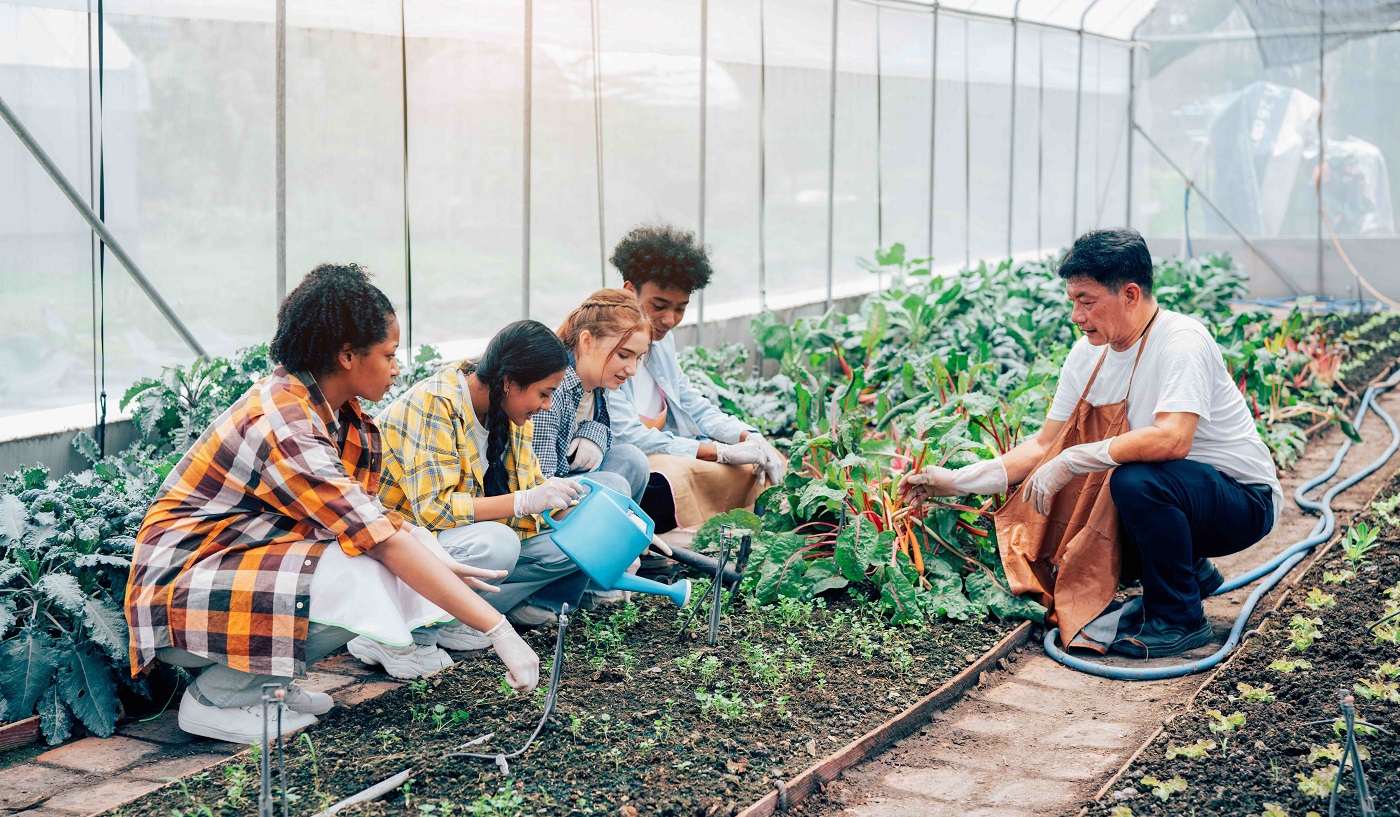In July 2023, our team published “People-powered pathways: Lessons in how to build students’ social capital through career-connected learning.” In the report, we describe successes and challenges in bringing social capital–building strategies to a variety of educational settings. Our observations draw from an 18-month pilot during which we leveraged our social capital playbook to provide direct support to a group of three intermediary organizations—Education Strategy Group, Generation Schools Network, and Hawai‘i P-20—collectively supporting 20 sites in the K–12 career pathways space. In the course of the pilot, we sought to understand how schools and nonprofits can make social capital-building an explicit, effective, and equitable component of existing career-connected learning models.
Research suggests that networks play a critical role in career success, as an estimated 50% of jobs are obtained through personal connections. To boot, estimates suggest up to 70% of all jobs are not published on job search sites. To be clear, social capital isn’t about encouraging students to schmooze their way into unqualified roles; it’s about unlocking doors to more opportunities that align with their interests and unleash their potential.
Yet, schools and nonprofits in our study discovered that focusing mainly on what students know—as opposed to who they know—was a difficult habit to break. Although program facilitators were enthusiastic about helping students develop helpful career connections, it was natural for many to teach social capital as subject matter rather than immerse students in experiences that build it. A number of sites took a tell-not-show approach: explaining the importance of social capital to students by teaching them that relationships can lead to job opportunities and telling students that networking is how people become successful.
What’s relevant is what’s real
That approach proved necessary but insufficient. After three months of implementation, two-thirds of site staff reported that their students weren’t sure how social capital is relevant to their lives. While there are many implicit benefits that come with relationships, students aren’t likely to fully grasp the power of social capital unless they also learn to apply it within their everyday experiences. As one intermediary staff member remarked:
“You don’t learn social capital in school by making it explicit. You make it part of the everyday experience. I was not optimistic going in that we could treat social capital as a subject matter, and I’m even less enthusiastic about that [now]. You learn about leveraging and managing relationships by living and reflecting on relationships.”
To try and break the habit of focusing on just the what and not the who, understanding why the habit formed in the first place is key. To this end, staff surveys and conversations revealed at least three barriers to creating immersive experiences: First, teachers and staff were understandably inexperienced with making social capital an explicit part of their curriculum. During the planning phase and first four weeks of the pilot, 86% of site staff reported that a barrier to implementation was lack of clarity about what social capital–building activities should look like.
Providing staff with sample activities, like those detailed in Part 3 of our People-Powered Pathways report, can help teachers and program staff picture activities in their own programs. Additionally, creating communities of practice in which practitioners can share ideas and benchmark progress with one another (described in Part 4 of our report) can help demystify social capital–building strategies.
Second, finding time during the regular program or class schedule for immersion opportunities was a challenge, as 86% of teachers and staff felt that in-program time constraints were a moderate or significant barrier.
In these cases, teachers and staff may consider priming students with skills in the classroom and asking students to practice those skills outside of the classroom with family members, friends, or other trusted adults. Teachers and staff can then debrief with students about the successes and challenges they faced during these experiences.
Lastly, out-of-program time constraints also played a role for teachers and staff, with 71% reporting that they didn’t have enough time to learn how to adapt and implement social capital–building strategies.
Some sites reflected that they would have benefited from allocating time and funds for professional development on the front end of the school year. Others believed they could have been more intentional about embedding social capital training into existing professional development for other related initiatives, rather than as a standalone training. One site lead described her team’s approach by stating:
“What we’re trying to do is transform the way that we engage with young people in a relationship-centered way and make this embedded into how we are as a school. So, we’re really actively working on building out a bigger school-wide strategy to shift culture, to shift mindsets, and to do that training.”
In sum, prioritizing experiential learning doesn’t mean that student experiences shouldn’t be scaffolded. Building the skills necessary for effective adult and peer interactions is an important precursor to having positive relationships. Still, talking about social capital concepts shouldn’t come at the expense of opportunities for students to practice building and maintaining relationships.
Example in action
Kupu, a nonprofit in Hawai‘i dedicated to increasing high school students’ readiness for natural resources careers, designed a week-long program to provide high school students with opportunities to develop career connections. The primary aim of the program was giving students the chance to visit a variety of natural resources work sites and college campuses to interact with industry professionals, college students, and professors.
For the initial pilot, Kupu created a classroom-based PowerPoint presentation that explained social capital, mentorship, and the different types of support that relationships can provide. However, that lesson remained separate and disconnected from the site visits. At the end of the pilot, students rated their satisfaction with the social capital lesson lower than the other outside-the-classroom experiences throughout the week, suggesting that the presentation didn’t actively engage students in learning how to use the site visits to build their social capital.
In planning for its second iteration of the program, Kupu decided to integrate opportunities for relationship-building into site visits. To build students’ self-efficacy, Kupu gave students opportunities to practice having career chats in preparation for the site visits. After the site visits, students were then asked to reach back out to at least two people they met during the site visits to have a more in-depth conversation about their career interests.
Practice and follow-up allowed students to hone their skills in expanding their networks and maintaining those relationships over time as they progress in their careers. At the end of the second pilot, five out of the six students in the pilot reported feeling very confident in their ability to reach back out to people they met during the site visits to have further conversations about their career interests.
In conclusion, while traditional educational settings have focused on knowledge acquisition, building social capital requires a shift towards experiential learning. Kupu’s pivot from a classroom-based lesson on social capital to an immersive, practice-oriented approach yielded significantly better student engagement and confidence. As career learning initiatives improve, integrating social capital-building into the fabric of educational settings is not just an add-on; it’s a necessity for equipping students with the networks that can unlock future opportunities.


